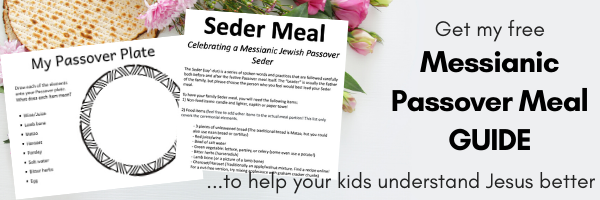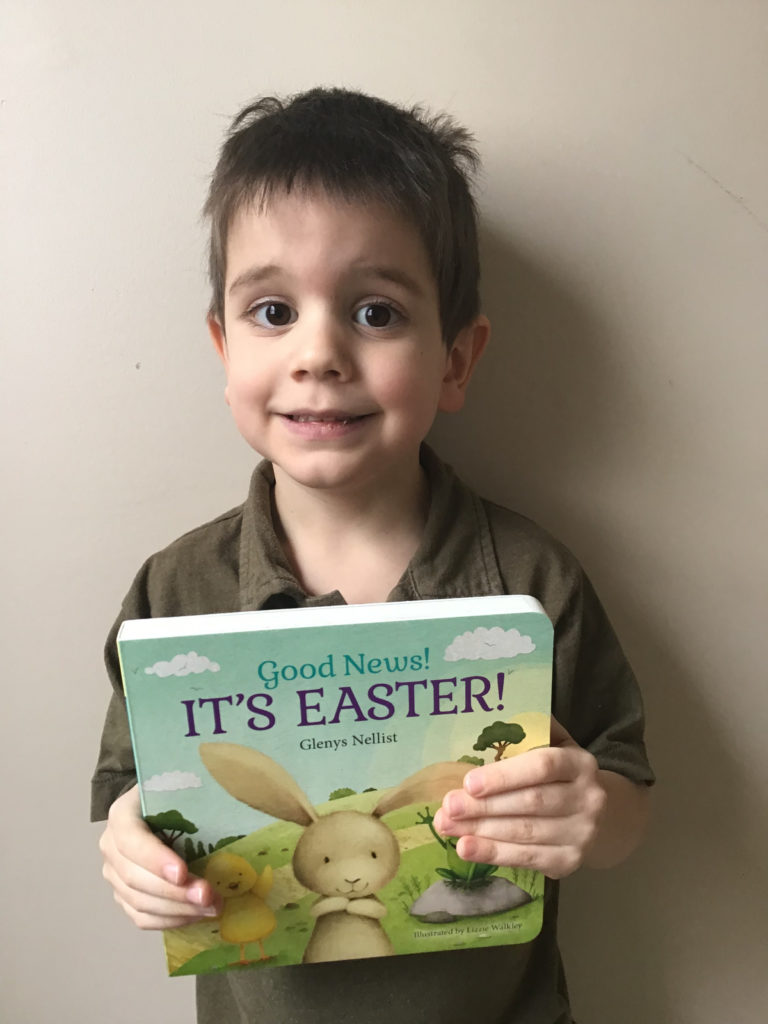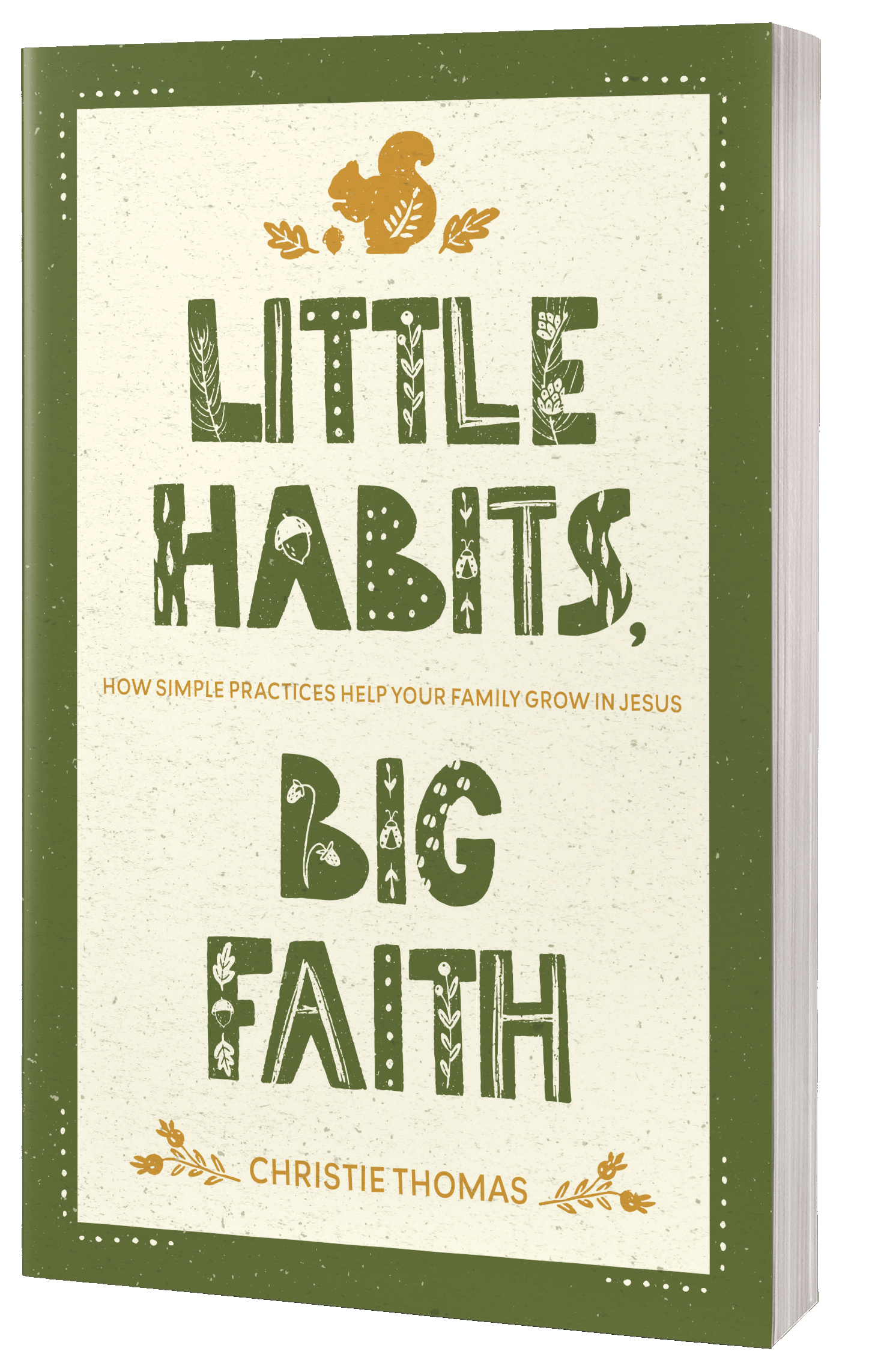Easter is coming! And with it, the eggs and bunnies and chicks.
But while Easter might currently be celebrated as an Ode to Spring with its bunnies and eggs and plastic-grass-filled-baskets, that is not why Christians celebrate it.
You may have heard a rumor that Easter was originally a pagan holiday. This is debatable. If this interests you, read this very well-research article here from an atheist historian (who clearly has no need to prove that Easter wasn’t pagan). Anyway, Easter is actually more closely linked to an ancient Jewish holiday, called Passover.
So many holidays.
(Want to celebrate a Messianic Passover meal with your kids? Check out this article!)

Here’s the short version:
Several thousand years ago, the Jewish people lived as slaves in Egpyt. In a hugely dramatic showdown with the gods of Egypt, the Jewish God sent a bunch of plagues. (yes, this was a divine battle, not God being a jerk). In the last plague, the angel of death was going to pass through all the homes in Egypt and take the firstborn son as a sacrifice. In order to save their sons, Jewish families each sacrificed a lamb and painted its blood on the doorposts of their homes. This was a sign to the angel of death to literally pass over those homes. Their firstborns were saved. In his grief, the Egyptian King kicked them out of Egpyt. They were free.
For thousands of years, the Jewish people have celebrated the Passover as a reminder of their dramatic release from slavery. A primary part of this feast is the lamb.
This feast is what Jesus (a first-century Jew), celebrated each year. One of the last things he did on earth was to take all the symbolism in the Passover meal (including the blood of the lamb) and apply it to himself. Basically, he said that “my death will save your lives”, just like the Passover lamb’s death saved lives thousands of years earlier.

That night, he was put on trial in front of a rigged jury and sentenced to death by crucifixion. The Passover
Christ, our Passover lamb, has been sacrificed for us.
1 Corinthians 5:7, NLT
But this Passover Lamb didn’t die just to save the eldest sons from death. This perfect Son of God and Son of Man died to save all who believe from the punishment of sin….which is eternal death. And the final, glorious touch was his resurrection on Resurrection Sunday.
RELATED: Why the resurrection matters to you and me.
But that’s A LOT to share with a child. Right? I can imagine the blank stares you’d get if you read that to a kid.

In fact, most adults don’t know the connection between Passover and Easter. Interestingly, in most Christian countries, the celebration of Christ’s death and resurrection is called something that sounds a lot more like “Pesach”, aka, Passover.
How to teach kids about Easter
As a long-time Children’s Ministry Director, writer, and mom, here’s my opinion: the best way to teach kids about Easter is by using excellent Bible storybooks, which will help your kids understand the significance of the holiday without overwhelming them. From there, you can move to object lessons and crafts, but a good children’s Bible will help your kids understand the basics of Easter without all the scary details found in the Bible. (Obviously, read those to them at some point, but I don’t recommend it with preschoolers.)
For additional help, you can find my Bible reading plan here (you can use it with Scripture passages or pages from the popular Jesus Storybook Bible).
But today I am thrilled to share a gorgeous, brand new book by best-selling Christian Children’s book author, Glenys Nellist.
If you’re looking for a book that will help your kids bridge the gap between what they see in the world and what the real meaning of Easter is, I have just the thing!
“Good News! It’s Easter!” is a sturdy little board book with a beautiful message. It begins by reminding us of the renewal that occurs in spring. On each page, we meet a living creature that has grown or changed in some way, but we also follow a path through a meadow. These pages show the Easter animals your child might recognize: a bunny, a chick, and a butterfly. But at the end of the
RELATED: How to explain the resurrection to a child
This, my friend, is the real meaning of Easter. Easter is mostly celebrated as a generic spring festival in the secular world. But for Christians, it’s a reminder of the death and resurrection of Jesus Christ that occurred about 2000 years ago.
I had the pleasure of being able to interview the author, who is a children’s ministry leader, Pastor’s wife, mom, and grandma, as well as being a best-selling author.
Let’s listen in on her tips for sharing the story of Easter with kids, plus another book she’s written about Easter for older kids.
RELATED: Simple ways to celebrate Easter as a family
Tell us a bit about your experience in teaching kids the Easter story.
Glenys: The Easter narrative found in the Bible is the most wonderful, mysterious, powerful story we could ever share with children. But I think we sometimes forget that.
Have you ever had the privilege of telling the resurrection story to a child who hasn’t heard it before? It only happened to me once but that experience stayed with me ever since.
We were in Sunday school and a little five year old boy was hearing it for the first time. He was completely and utterly taken aback. I remember him staring up at me, wide-eyed, saying, “Wow! Jesus REALLY came alive? How did he do that? Did that REALLY happen?”
It was a wonderful moment that reminded me of this truly incredible happening upon which our faith is hinged. We adults repeat the Easter story so often that it can lose its magnitude. This little boy helped me remember that we serve and believe in an incredible, risen Savior!
Easter (particularly Good Friday) contains a good deal of sadness. How would you communicate Jesus’ death on the cross to kids without scaring them or glossing over the death part?
Glenys: This is a challenging area for a writer. I used to think that we shouldn’t necessarily protect children from the details of the crucifixion (since we can’t reach the joy of resurrection without going through the pain of death.)
But as I’ve matured as a writer, I think that, especially for young children, it’s much better to simply say, “Jesus died”. They don’t need the details.
Ultimately, it’s up to parents to decide how much, or how little, of the Good Friday narrative should be shared.
Do you have other Easter resources for families with slightly older kids?
Glenys: Yes! Easter Love Letters from God is a premium picture book that tells the Easter story in seven chapters with seven lift-the-flap love letters from God.

Written for children ages 5-10, it can be used as a seven-day devotional tool for families during Holy Week or by children’s ministers for Easter events. I have a free downloadable Resource and Activity Pack to accompany this book. Contact me for details.
So there you have it: the best way to teach kids about Easter is by using excellent Bible storybooks, which will help your kids understand the significance of the holiday without overwhelming them.
What’s YOUR favourite way to help teach kids the real meaning of Easter?








0 Comments
Trackbacks/Pingbacks